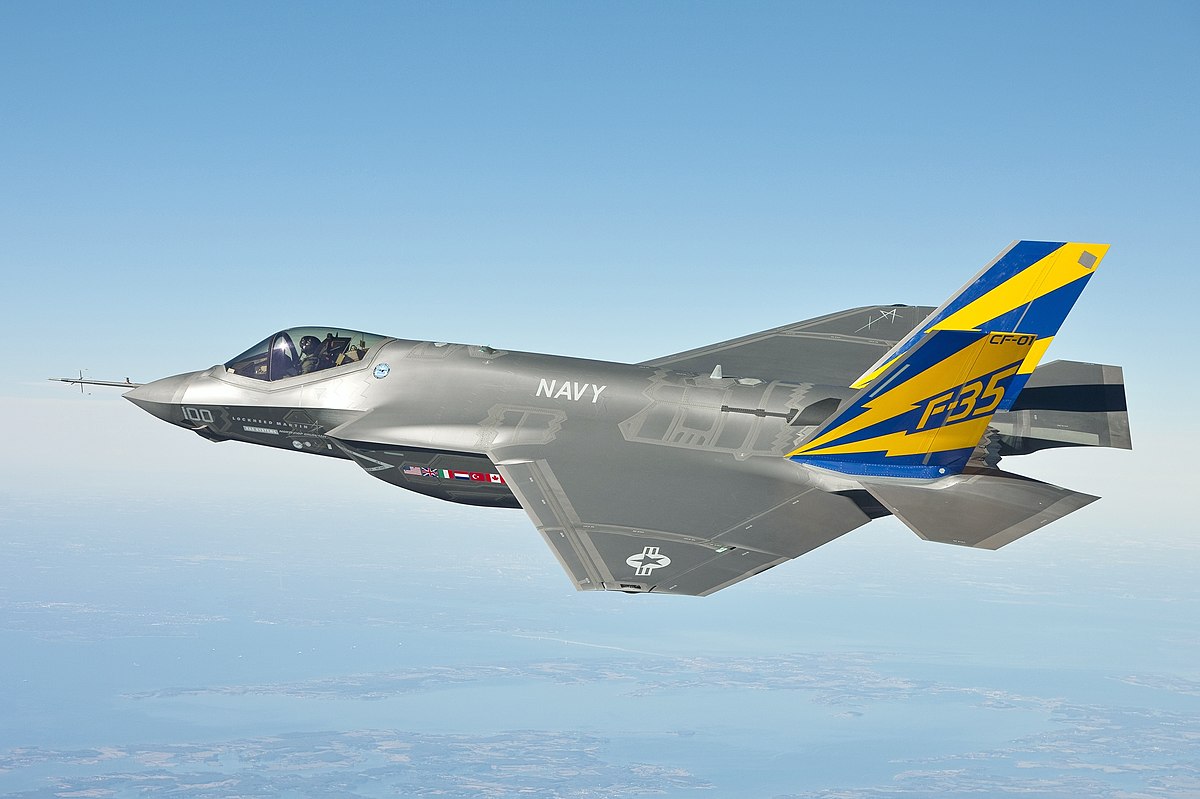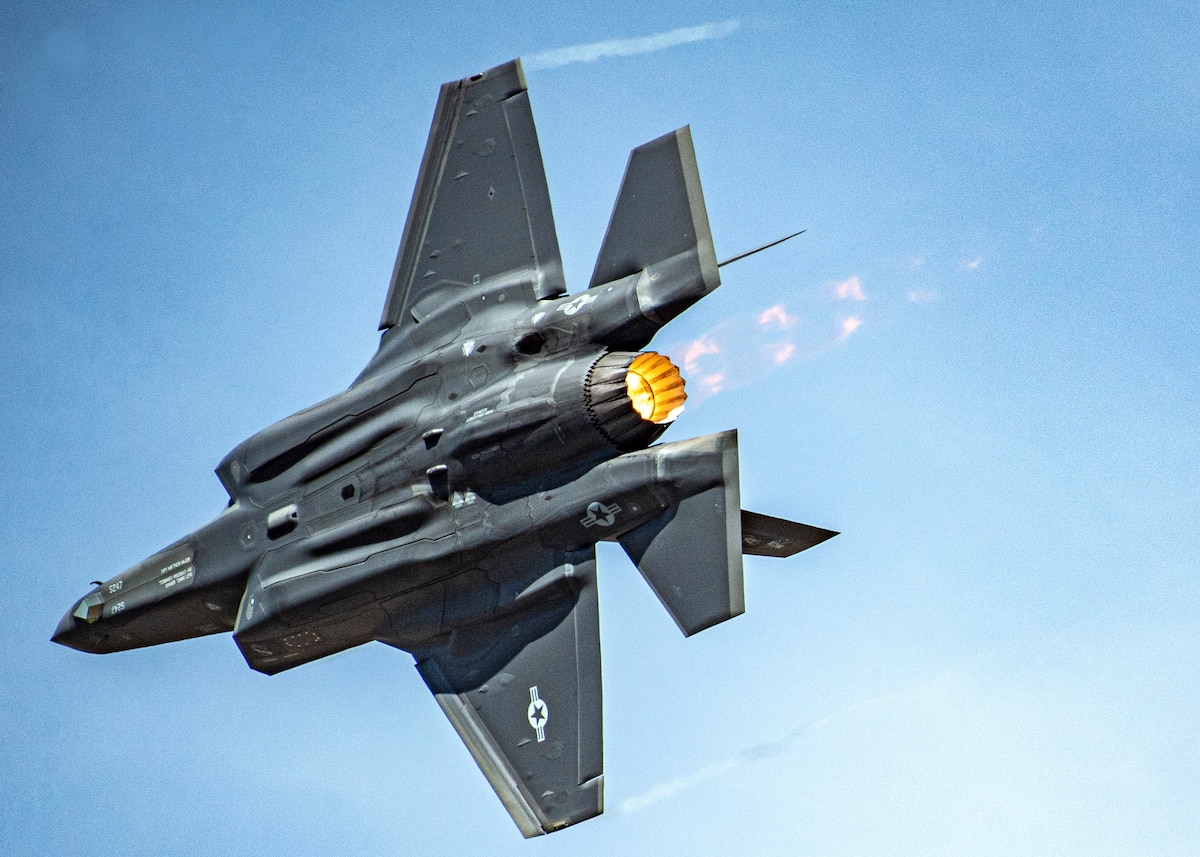In a significant milestone for global defense capabilities, the F-35A Lightning II, one of the most advanced fighter jets in the world, has officially been certified to carry nuclear bombs. This certification marks a pivotal moment in military aviation history, as the F-35A joins a select group of aircraft capable of delivering nuclear payloads, significantly enhancing the United States’ strategic deterrence and global military reach.
A New Era of Nuclear Deterrence
The certification of the F-35A to carry nuclear bombs is more than just a technical achievement; it represents a fundamental shift in the dynamics of modern warfare. The F-35A, a fifth-generation multi-role fighter, is renowned for its stealth, agility, and advanced avionics, making it one of the most formidable aircraft in the skies. Now, with the ability to carry nuclear weapons, the F-35A becomes a key component in the U.S. nuclear triad, which includes land-based missiles, submarine-launched missiles, and nuclear-capable aircraft.
This development ensures that the U.S. and its allies maintain a credible and flexible nuclear deterrent, capable of responding to a wide range of threats. The F-35A’s integration into the nuclear mission also underscores the continued relevance of manned aircraft in delivering strategic nuclear strikes, even in an era increasingly dominated by unmanned systems and long-range missiles.

The Journey to Certification
The path to certifying the F-35A for nuclear missions has been a complex and rigorous process. The aircraft underwent extensive testing and evaluation to ensure it could safely and effectively carry and deploy nuclear bombs, specifically the B61-12, a modernized version of the U.S. military’s primary tactical nuclear weapon.
Testing involved a series of flight trials and simulations to evaluate the F-35A’s performance under various conditions, including high-speed maneuvers and stealth operations. Engineers and military experts worked closely to integrate the B61-12 into the F-35A’s weapons system, ensuring that the aircraft could deliver the bomb with precision while maintaining its low-observable, or “stealth,” capabilities.
The successful certification means that the F-35A is now equipped to carry the B61-12 in its internal weapons bays, preserving its stealth profile and enabling it to penetrate enemy defenses undetected. This capability is crucial for maintaining the element of surprise in a potential nuclear strike, as well as for ensuring the survivability of the aircraft and its pilot in highly contested environments.

Implications for Global Security
The certification of the F-35A to carry nuclear bombs has significant implications for global security and geopolitical stability. As tensions continue to simmer between major world powers, the F-35A’s nuclear capability serves as a powerful deterrent, signaling to potential adversaries that the U.S. and its allies are prepared to respond decisively to any nuclear threat.
For NATO, the F-35A’s nuclear certification is particularly important. Several NATO countries, including the United Kingdom, Italy, and the Netherlands, have acquired the F-35A, and the aircraft’s ability to carry nuclear weapons enhances the alliance’s collective defense posture. It also ensures that NATO maintains a credible deterrent in Europe, where the threat of nuclear escalation remains a concern.
However, the move has not been without controversy. Critics argue that the deployment of nuclear-capable F-35As could escalate tensions with rival nations, particularly Russia and China, both of whom view the modernization of NATO’s nuclear forces as a potential threat to their security. The certification could also spark a new arms race, with adversaries seeking to develop their own advanced nuclear delivery systems in response.

The Future of the F-35A
With its new nuclear capability, the F-35A is set to play a central role in the U.S. military’s strategic arsenal for decades to come. The aircraft’s versatility, combining conventional strike capabilities with the ability to deliver nuclear weapons, makes it an invaluable asset in any potential conflict scenario.
As the global security environment continues to evolve, the F-35A’s certification to carry nuclear bombs ensures that the U.S. and its allies remain at the forefront of military technology and deterrence. This development not only reinforces the importance of the F-35A in modern air combat but also underscores the enduring relevance of nuclear weapons in maintaining global peace and stability.
In the years ahead, the F-35A’s nuclear role will likely expand, with continued advancements in technology and weaponry further enhancing its capabilities. As it takes to the skies with a new and powerful mission, the F-35A stands as a symbol of both the promise and the peril of modern military power.






